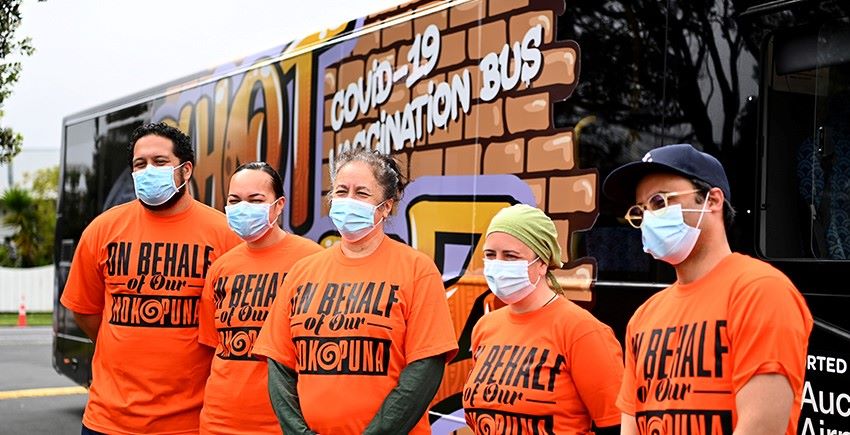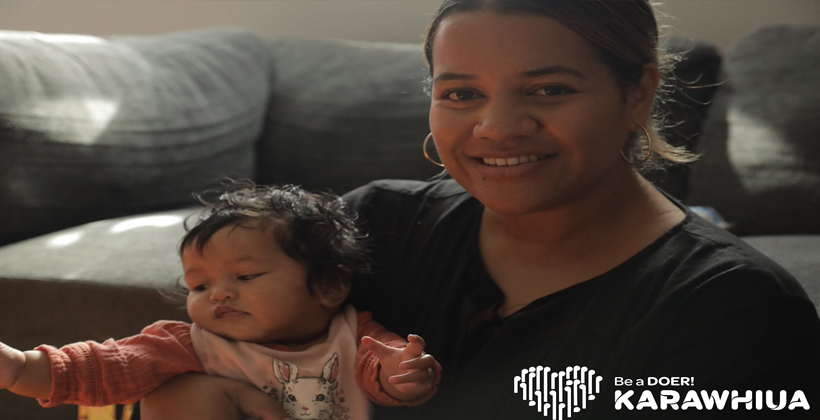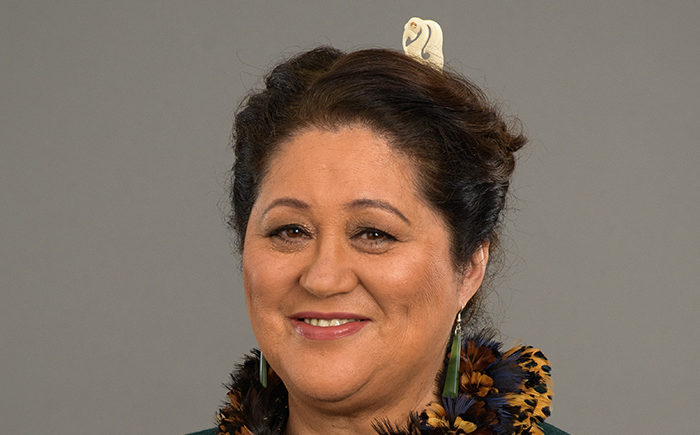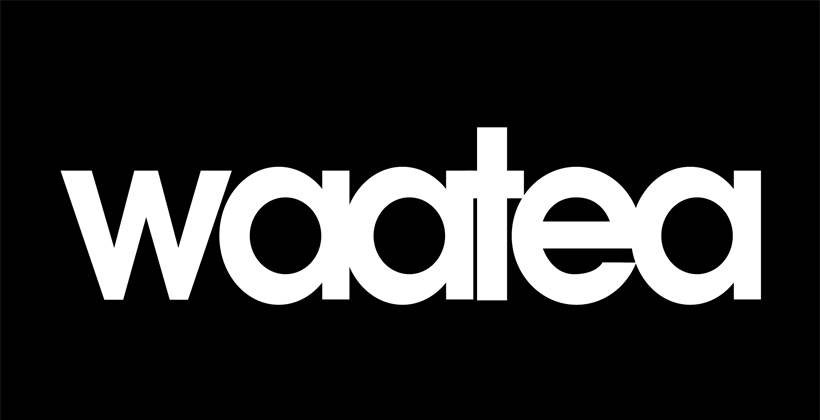February 12, 2022
Dr Rawiri Taonui: Omicron – Māori | Racism at the heart of Ministry of Health refusal to release tamariki Māori data


Dr Rawiri Taonui Omicron Māori | Racism at the heart of Ministry of Health refusal to release tamariki Māori data
The Ministry of Health must release the tamariki Māori vaccination data requested by the Whānau Ora Commissioning Agency.
The Ministry gives Māori data to mainstream providers but withholds it from Whanau Ora. The Ministry treats Whānau Ora differently because of a racist assumption that the role of Pākehā under Te Tiriti o Waitangi is to protect Māori from what they believe is an inherently untrustworthy Māori organisation. The Ministry uses the Treaty Principle of Consultation to play iwi off against Whānau Ora and thereby evade its primary obligation under the overriding Treaty Principle of Protection to save Māori lives. Māori that buy into that are unwittingly complicit.
Ministry data shows a 19.4% gap between Tamariki Māori (23.6%) and ‘All Ethnicities’ (43.0%). The actual gap is much wider. Making a conservative adjustment for an undercount of the Māori population in the Ministry’s figures and comparing Māori and non-Māori rather than Māori and All Ethnicities, shows Māori (23.6%) are behind non-Māori (48.7%) by 25.1%. This gap is steadily widening.
The Data
The National Health Index (NHI) and Covid Immunisation Register (CIR) are central to understanding the Whānau Ora tamariki data request.
The NHI contains the name and ethnicity of persons using the health system but not their vaccination status. The CIR contains the name and vaccination status of individuals but not their ethnicity. Neither includes iwi information.
Whānau Ora has access to the NHI but not the CIR. Other providers like private company Healthline have access to the CIR. Healthline uses the CIR to advance vaccinations. Whānau Ora wants to use it in the same way.
The High Court
Whānau Ora requested the tamariki data four weeks ago. The Director-General of Health and the Director of National Immunisation Programme Astrid Koornneef, say the tamariki Māori data is particularly “sensitive because it involves children,” therefore they must first consult with Māori, the Office of the Children’s Commissioner and the Privacy Commissioner.
Whānau Ora has said it will take the Ministry to the High Court where it won two decisions last year over 12yrs+ Māori data. The Ministry says those decisions do not apply to 5-11yrs tamariki Māori.
In fact, the issues are the same in character and substance. The following is a summary of the arguments the Ministry employed last year in several attempts to block or limit the sharing of data with Whānau Ora, including the findings of Justice Cheryl Gwyn on 1 November and 6 December and where appropriate my analysis.
Health Information Privacy Code (2020)
The Ministry used several sections in the Code in attempts to deny the request from Whānau Ora. The first was over individual privacy. The High Court found this was not an issue.
• No privacy issues had arisen from Whanau Ora’s access to data in the NHI.
• Documentation from the Ministry acknowledged that Whānau Ora had “a very impressive technical capability, data-handling systems and personnel.”
• The Ministry was inconsistent in withholding data from Whānau Ora that they had already shared with non-Māori organisations such as Healthline.
Mini-Maps
The Ministry applied an ‘other options’ section in the Code to avoid sharing the data, proposing instead that they give ‘anonymised’ mini-maps highlighting areas Whānau Ora could search for unvaccinated Māori.
Justice Gwyn found the proposal was inconsistent, lacked objectivity, over-read the Code, and failed to understand that alternative options must be equal in effect.
• The Ministry had given Healthline the Māori vaccination data which they had used to contact thousands of Māori through effective phone and text campaigns.
• The mini-maps option for Whānau Ora would mean inordinate time-consuming door knocking whole neighbourhoods trying to locate unvaccinated Māori individuals among large populations spread across a range of geographic locations with the added impediment of not knowing exactly where they lived or whether they were at home.
One surmises, in an echo of the Middle Ages, Whānau Ora could have driven the cul-de-sacs loud hailing “Send out the unvaccinated.”

Urgent vs non-Urgent Data
The Ministry tried to apply an ‘urgency’ provision in the Code to provide information for the Auckland and the Waikato District Health Boards (DHBs), where there were high Delta case numbers, but not in other DHBs with lower case numbers.
The High Court found that the Ministry wrongfully interpreted the urgency provision.
• “Because all agreed that Covid-19 presented a serious threat to Māori in all DHBs with ESR modelling predicting that even if 90% of the eligible Māori population was vaccinated 60% were expected to acquire Covid-19.”
• “The Ministry itself acknowledged that it is critical to reach all eligible people in New Zealand, especially Māori, as soon as possible.”
Capacity
The Ministry argued that Whānau Ora could not contact all unvaccinated Māori.
• The High Court found that it was contradictory for the Ministry to say that Whānau Ora “could not contact all of the unvaccinated, with their contact details, while at the same time asking Whanau Ora to locate them without their contact details.”
The Ministry also said that the Whānau Ora lacked capacity in regions like Te Tai Rāwhiti, therefore, supplying the data would not be effective.
• The High Court found that with extensive outreach programmes, satellite sites and mobile services, Whānau Ora providers had more vaccination sites and greater reach than mainstream providers on the East Coast.
The Ministry should have known this because of widespread coverage about Māori providers closing the testing gap on the East Coast in 2020 and using whānau approaches to achieve 80%+ vaccination in some areas by August last year.
Error of Fact
The Ministry argued that it did not need to share data with Whānau Ora because it already did so with Māori providers in DHBs like the Wairārapa.
• The High Court found this to be an ‘error of fact’ because the providers identified by the Ministry, Te Whaiora and Te Hauora Rūnanga o Wairārapa, did not have the data.
Unvaccinated vs Single Dose
The Ministry proposed not sharing the data of Māori waiting for their second dose until eight weeks had elapsed. The High Court found this was inconsistent.
• Evidence showed that the Ministry including through Healthline followed up on the second dose three weeks after their first dose.
The unavoidable conclusion is that this was a deliberate attempt to impede Whānau Ora’s effort to achieve higher Māori full vaccinations.
Selective Release
One of the most disturbing aspects of the hearings occurred when the Ministry having

asked Whānau Ora providers in areas like Te Arawa and the Waikato, to support whānau Māori with Covid-19 self-isolating at home, gave those providers patient contact details without consulting iwi.
Te Ururoa Flavell, the former leader of Te Pāti Māori and a former Minister of Māori Development and Minister for Whānau Ora, said:
These agencies are asking us to assist when whānau have already fallen ill, and when they cannot deal with the situation. It is convenient, and cheaper for them, to offload that task onto Whānau Ora. They know we can do a better job because we have proven we are better at working with our people.
The Ministry is thereby willing to give us the contact details of whānau who must self-isolate after they fall ill with Covid-19 (and possibly dying), but the Ministry is not willing to provide us with the contact details of that whānau to prevent that from happening.
Justice Gwyn concluded that the Ministry was inconsistent on several levels.
• Disclosing the information to enable Whānau Ora providers to care for Māori with Covid-19 self-isolating at home, but not providing that data to vaccinate Māori to prevent infection by Covid-19.
• Requiring consultation with iwi before supplying data to vaccinate Māori, but not requiring consultation with iwi once Māori were sick and isolating at home and mainstream providers were unable to care for them.
Iwi and Whānau Ora
The Ministry said it wanted to withhold data in some areas because some iwi disagree with releasing their data to Whānau Ora. The High Court found that the Ministry was not acting consistently or rationally.
• While the Ministry emphasised its obligation to consult with iwi about sharing the data with Whānau Ora it did not require the same when sharing Māori data with non-Māori organisations.
The perverse anomaly here is several.
• Neither the NHI nor CIR contains iwi data.
• If an iwi in one region objects to the release of data, it is no easy task to identify and withdraw the data for their members living in other areas where tribes agree to data sharing.
• Conversely, it is difficult to identify people from other tribes from other areas living in their region whose tribes agree to share their data.
• The fact that large numbers of Māori live outside their tribal area compounds these problems. Iwi are tangata whenua in their rohe. Most Māori respect mana whenua and their rights on tikanga and a range of other matters. However, very few would endorse another iwi deciding what happens with their personal information let alone that of their children.
The Ministry is exploiting old tensions between iwi and urban mātāwaka to play iwi off against Whānau Ora in a manner that weakens the tamariki vaccination effort. Those who buy into this are unwittingly complicit.
The iwi versus urban history does not matter in a pandemic. What matters is that Māori providers get the information they need to save Māori lives.
The Ministry that forgot Te Tiriti o Waitangi
Te Tiriti does not confer a right upon the Ministry to act as the arbiter of relationships between Māori. If iwi and Whānau Ora disagree that is their business.
Under Te Tiriti o Waitangi and the Treaty Principle of Partnership, the Ministry must consult with Māori. In an emergency pandemic situation, that obligation falls within the overriding Treaty Principle of Protection, in this case, to actively protect Māori lives. That is the single overarching priority for the Ministry.
Unfortunately, the Ministry has it the other way around. This is not surprising. One of Justice Gwyn’s observations was that while many of the Ministry’s policies spoke to the importance of te Tiriti, their cornerstone paper on the Māori data question (the ‘Decision Document’) failed to mention te Tiriti.
Data Discrimination
The position of the Ministry is structurally racist because the Ministry treats non-Māori and Māori organisations differently. There is a higher benchmark for Whānau Ora. The history of decision making is consistent in a manner that invariably and deliberately limits their contribution to the Māori vaccination effort. The racist assumption underpinning this is a belief that under te Tiriti, Pākehā are gatekeepers protecting Māori children from a health organisation that is inherently untrustworthy because it is Māori.
The prevailing narrative makes much of Māori mistrust of the government. We should be more concerned about the Ministry’s mistrust of Māori.
Noho haumaru, stay safe.
Dr Rawiri Taonui









